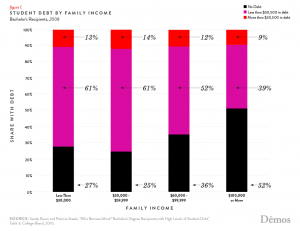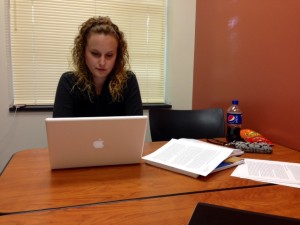To apply for financial aid, it’s as easy as going to WCU’s website, typing “financial aid” into the search bar, clicking on the financial aid office’s website and then clicking on the “Apply for Aid” button in the middle of the page. The “Apply for Aid” button will guide you to a bulleted list of steps that will help you fund your student education over the next four years.
“By completing the Free Application for Federal Student Aid (FAFSA), Western Carolina University offers and awards student aid in the form of grants, scholarships, student and/or parent loans and work-study funds. These funds come from federal, state, institutional and outside sources,” said Trina Orr, the WCU director of financial aid over an email interview.
According to statistics from 2012 on the U.S. News College Compass’s website article about WCU, 83.6 percent of WCU’s population applied for need-based financial aid, while 66.3 percent of students received aid and 64 percent of students received need-based scholarships or grant aid.
“My parents fill out the FAFSA forms every year and I get a Pell Grant. Tuition has gone up a lot at Western and my little brother is also in college at Elon and his tuition has increased, as well,” said Sarah Keith, a WCU senior and soon-to-be graduate.
Hundreds of other seniors like Keith who receive financial aid funding will be faced with the reality of paying those debts back when they graduate. In order to be eligible to have, and keep, financial aid, a student must be a citizen of the United States, have a valid social security number and, most importantly among other stipulations, have financial need.
“The Expected Family Contribution (EFC) is a number that is used to determine a student’s eligibility for federal student aid. This number results from the financial information the student provides on his or her FAFSA. The EFC is reported on the Student Aid Report (SAR). Financial aid administrators (FAAs) determine an applicant’s need for federal student aid from the U.S. Department of Education (the Department) and other sources of assistance by subtracting the EFC from the student’s cost of attendance (COA),” explained Orr.
WCJ reported earlier on the open forum held by the Tuition and Fees Committee on October 25 discussing tuition hikes and fee increases for the upcoming year. According to Sam Miller, the number of students requesting financial aid has gone up in the past four years.
Miller then said that over 8,000 students received financial aid last year, and that number is expected to increase next year. Student loan debt for WCU graduates averaged about $18,600 last year. Western is about $2,000 below the loan debt of the UNC system. Miller stated that the default rate has been trending up over the past few years for WCU and also for students nationally.
The national student debt amounts to over $1 trillion in the U.S. With tuition on the rise, the number of students requiring need-based financial aid is surely to rise as well and, with that, student loan debt. According to the report, “At What Cost? How Student Debt Reduces Lifetime Wealth”by Robert Hiltonsmith on demos.com, evidence has begun to grow indicating that student debt could be more detrimental to financial futures than that of the past, particularly for those with the highest levels of debt: students from low-income families and students of color.

This graph from Hiltonsmith’s report shows student debt by family income. Photo originally from demos.com
Hiltonsmith’s study has shown that over a lifetime of employment and savings, $53,000 in education debt results in a wealth loss of nearly $208,000.
“This income gap between indebted and debt-free young households is likely due to the influence exerted by the need to repay their debt on their job choices post-graduation, causing them to prioritize a job’s salary over all its other characteristics. However, such research also shows that the incomes [of”]education-indebted households quickly fall behind their peers without education debt, likely because the need for indebted households to make consistent monthly payments on their debt causes them to lack the job flexibility and mobility enjoyed by debt-free households,” Hiltonsmith states in the report.
Keith Long, a WCU senior, estimates that he will owe approximately $20,000 in loan debt and plans to pay that off in monthly payments over five to 10 years. Long feels that, despite future debt, college is still a necessity in most cases. His girlfriend, Kayla Shipman, also a senior, receives scholarships, need-based grants, a Pell Grant, a supplemental education grant, and Teaching Fellows. Shipman will owe four years of teaching in North Carolina instead of owing loans. They plan to marry sometime early next year after graduation.
“I think a college education is nearly necessary to enter much of the available profitable jobs in today’s market. Unfortunately, the cost of that education puts massive debt on students who aren’t even sure if they will get the job they were looking for to pay for the education in the first place. It wasn’t that long ago that there were more trade schools than colleges. The philosophy of “work smarter, not harder” pushed the move to universities with the promise of better pay without the manual labor,” Long said.

Kayla Shipman and Keith Long plan to marry after graduation and will be faced with some student loan debt Photo Credit: Kayla Shipman
Shipman feels fortunate that she will not be in the financial strain that some students will look forward to in their future career paths.
“I definitely feel like I am receiving an education worth the debt I will be in, but I know that I am in a different situation than most students. I will only owe four years of teaching, and I planned to teach, which is why I came to college. I will not owe loan debt as I know most students do, and I feel very fortunate about that,” Shipman said.
Heather Crawford, a 2013 WCU alumni, says that the transition to the “real world” from WCU was easy for her because of preparation.
“I definitely prepared myself for the working world by actively seeking a job while I was still enrolled in college. I had a job immediately after I graduated thanks to my education and experience in PR. Although the job that I currently have isn’t anything that I studied in college, my degree and proof of hard work definitely got my foot in the door here at Mountain 1st. I don’t think I would’ve gotten this job if I didn’t have a college degree,” Crawford explained.
Crawford works in the accounting department at Mountain 1st Bank and Trust in Hendersonville, North Carolina. She was a Communications major at WCU with a double concentration in Public Relations and Journalism and says that it was hard to find a job in her field of study right out of college because workplaces wanted five or more years of experience. She is optimistic about her future, however, and with planning and hard work, has already paid off her student loans.
“I had two loans that I attained during my time at Western. In general, I am a responsible person and was prepared to save the money that I earned in the first few months after I started working in order to make payments on my loan. I had the loans completely paid off three months after I graduated. This was before my grace period ended, so I didn’t have any interest on one of them, which was great. My education definitely was well worth the monetary debt that I was in. If it weren’t for my education, I would probably have a lower-end paying job than what I have now with no way to get a better job,” Crawford said.
Crawford stays optimistic and patient, waiting for the right opportunity to work at a PR firm, as that is what she enjoys and what her degree was in.
Chancellor Belcher announced in September that WCU’s population has surpassed 10,000 students. Trina Orr says that that will not affect students receiving the necessary financial aid funds, as financial aid money is dispersed by the federal and state governments.
“Funding of federal and state student aid is determined through the federal and state budget processes. Western Carolina University administers federal and state aid based on current funding models and regulations. The amount of available aid to award is more a by-product of any reductions or cuts to federal or state aid dollars than it is to enrollment growth or numbers,” Orr explained.
Or, as tuition rises, so will the aid money available to help students pay for their education.
Chancellor Belcher explains some of the increases in fees and what that means for the university.



